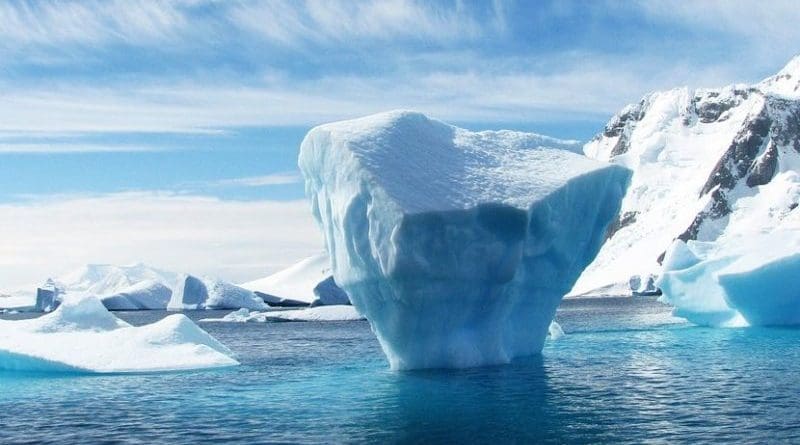Melting Of Antarctic Ice Sheet Could Cause Multi-Meter Rise In Sea Levels By End Of Millennium
Scientists predict that continued global warming under current trends could lead to an elevation of the sea level by as much as five meters by the year 3000 CE.
One of the many effects of global warming is sea-level rise due to the melting and retreat of the Earth’s ice sheets and glaciers as well as other sources. As the sea level rises, large areas of densely populated coastal land could ultimately become uninhabitable without extensive coastal modification. It is therefore vital to understand the impact of different pathways of future climate change on changes in sea level caused by ice sheets and glaciers.
A team of researchers from Hokkaido University, The University of Tokyo and the Japan Agency for Marine-Earth Science and Technology (JAMSTEC) explored the long-term perspective for the Antarctic ice sheet beyond the 21st century under global-warming conditions, assuming late 21st-century climatic conditions remain constant. Their models and conclusions were published in the Journal of Glaciology.
The Ice Sheet Model Intercomparison Project for the Coupled Model Intercomparison Project Phase 6 (ISMIP6) was a major international effort that used the latest generation of models to estimate the impact of global warming on the ice sheets of Antarctica and Greenland. The objective was to provide input for the recently published Sixth Assessment Report (AR6) of the Intergovernmental Panel on Climate Change (IPCC). The contribution of the Antarctic ice sheet to sea-level rise by 2100 was assessed to be in the range between −7.8 and 30.0 centimetres under unabated warming and between 0 and 3 centimetres under reduced emissions of greenhouse gases.
The team used the ice-sheet model SICOPOLIS (SImulation COde for POLythermal Ice Sheets) to extend the whole ISMIP6 ensemble of fourteen experiments for the unabated warming pathway and three for the reduced emissions pathway. Until the year 2100, the set-up was the same as in the original ISMIP6 experiments. For the time beyond 2100, it was assumed that the late 21st-century climatic conditions remain constant—no further climate trend was applied. The team analysed the results of the simulations with respect to the total mass change of the ice sheet, regional changes in West Antarctica, East Antarctica and the Antarctic Peninsula, and also the different contributors to mass change.
The simulations of mass loss of the Antarctic ice sheet show that, by the year 3000, the unabated warming pathway produces a sea-level equivalent (SLE) of as much as 1.5 to 5.4 metres, while for the reduced emissions pathway the SLE would be only 0.13 to 0.32 metres. The main reason for the decay under the unabated warming pathway is the collapse of the West Antarctic ice sheet, made possible by the fact that the West Antarctic ice sheet is grounded on a bed that is mostly well below sea level.
“This study demonstrates clearly that the impact of 21st-century climate change on the Antarctic ice sheet extends well beyond the 21st century itself, and the most severe consequences — multi-meter contribution to sea-level rise — will likely only be seen later,” says Dr. Christopher Chambers of Hokkaido University’s Institute of Low Temperature Science and lead author of the paper. “Future work will include basing simulations on more realistic future climate scenarios, as well as using other ice-sheet models to model the outcomes.”

